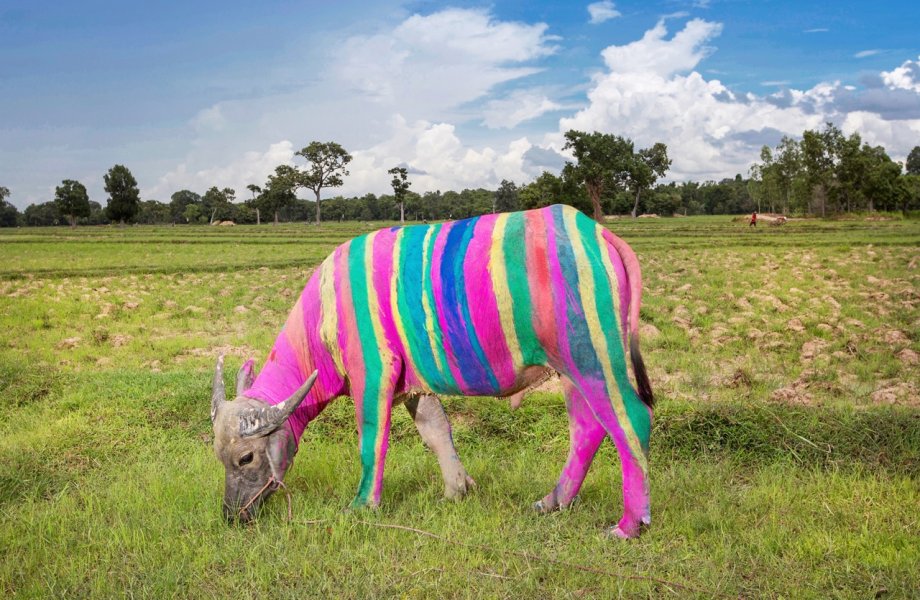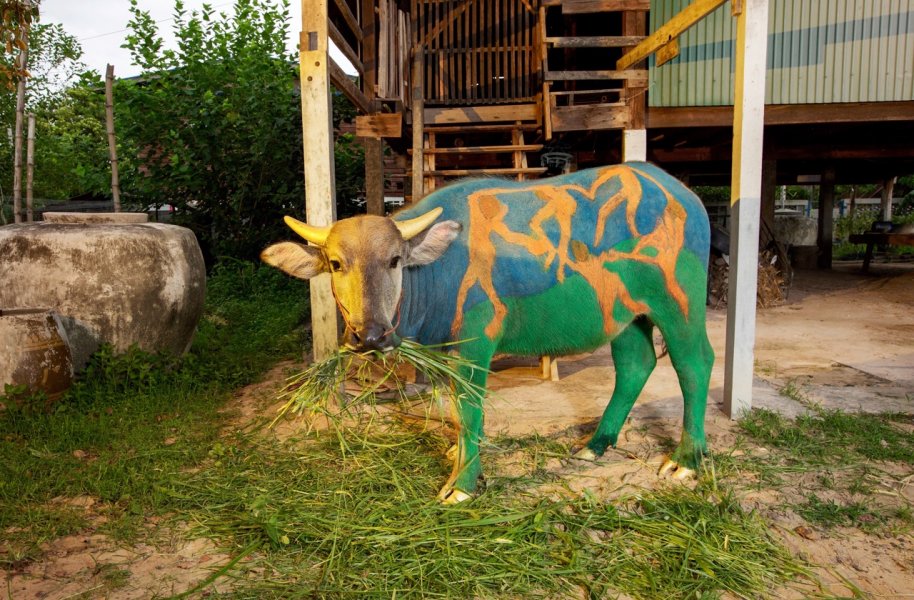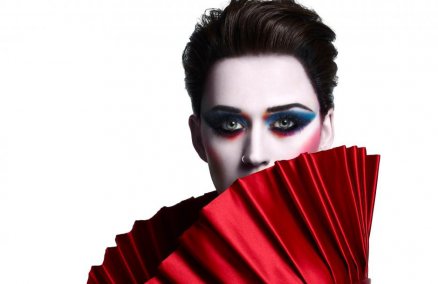How did you come up with the idea for this project?
The idea started in 2010 during another project, titled Dream of Beyond, which featured me modelling with buffaloes to explore how the relationship between humans and buffaloes has changed in recent times. Then in 2013 I saw an art project by Chiang Mai Zoo where they painted an elephant to look like a panda. I found it extremely funny and loved the idea of using animals as a canvas for art.
What sparked your love for buffaloes?
My family had a lot of buffaloes when I was a kid growing up in Isaan. It sparked my strong affection for buffaloes and all animals. They are very intelligent animals that deserve more respect from Thai people. Right now, Thais consider buffaloes to be stupid–in fact, the word “buffalo” is equivalent to a swear word. This art project hopes to change that stigma.
How did you manage to rescue these buffaloes from the slaughterhouse?
I managed to save three buffaloes, one of which is still a baby. I used my own money to pay farmers in Ubon to provide proper care for the buffaloes and not kill them. In the future, I plan to do art projects to raise money specifically for this cause.
What was it like working with the buffaloes? How did they react to getting painted?
It was quite difficult because these aren’t trained animals; they are used to doing their own thing on a farm. I had to be careful with them and let them have their way sometimes. But having lived with buffaloes before, I’m quite familiar with how to interact with them. I made sure they got to know me and my smell, so that they could feel comfortable around me. The most difficult bit was the actual painting process, since they often got ticklish due to the paintbrush. Also, it took them some time to get used to the flash from the camera.
What made you choose to paint the works of Picasso, Warhol, Klimt and Murakami on the buffaloes?
Firstly and foremost, they are artists that I have admired for a long time—particularly Andy Warhol, to the point where I gave myself the pen name“Andy Warhol of the Mekong”. Aside from that, I wanted to select pieces that are simple and not too complex to understand, like the style of pop art, because I wanted it to be easy for people of all ages–whether art lovers or not–to be able to understand. Actually, that’s one of the most important techniques of creating art that you want to make an impact. It needs to be able to reach people of all ages, classes and backgrounds.
What impact do you hope that this photography project will have on Thais’ attitude to buffaloes?
I want to change the stigma that Thai people have towards buffaloes as being dumb, inferior animals. One of the main target groups is actually today’s youth generation who may not have experience with raising buffaloes on a farm. If you’ve never interacted with one before, you may not realize that buffaloes are complex animals that have plenty of uses and they can be beautiful enough to feature in artworks like my own. At the same time though, this project aims to make a much bigger statement about Thai society. Thai people have a tendency to be quite pessimistic, for instance we look down on the working class or service people in restaurants. It’s something that has become a normal part of our society. Therefore, this project aims to change perspectives not just about how we treat buffaloes, but how we treat each other in society.
How powerful of a tool is art in making social change?
It’s like Andy Warhol once stated, “Art is everything but not everything is art.” In other words, art has the power to make an impact on everything, including big social and political matters. Art is not just another career. I truly believe that art is an international language that can be used to overcome barriers between people and can help the world become a much more open-minded place.

Balenciaga Buffalo

Andy Warhol Buffalo

"Dance" by Henri Mattise Buffalo

"Eye Love" by Takashi Murakami Buffalo



















